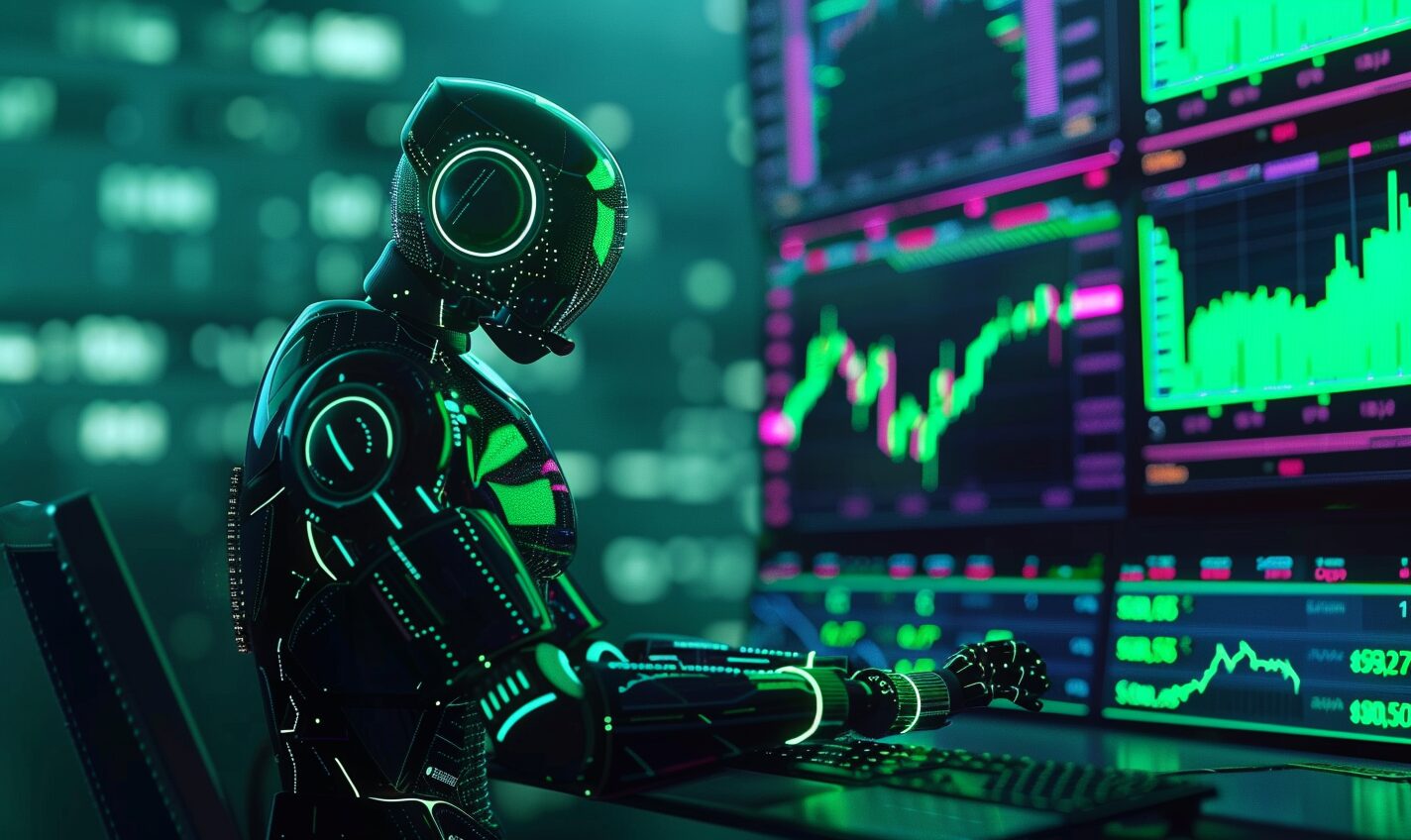Have you ever wondered if a machine can think and act like a human? AI is a groundbreaking field that seeks to answer this question. It involves creating intelligent machines capable of performing tasks that typically require human intelligence. These tasks include problem-solving, recognizing speech, learning and planning.
AI’s importance in people’s daily lives is increasing rapidly. It’s transforming industries, from health care to finance. AI is evolving and shaping the world in remarkable ways. The potential of AI is vast, and its full impact is yet to be seen.
Understanding Artificial Intelligence
Ai refers to the simulation of intelligence in machines. These AI systems think like humans and mimic their actions. The power of AI lies in its ability to rationalize and take steps to achieve a specific goal.
AI development started in the mid-1950s when John McCarthy coined “Artificial Intelligence.” During this time, early AI research focused on problem-solving and symbolic methods.
In the 1980s, systems could learn from data with the rise of machine learning. A decade later, the emergence of deep learning and neural networks led to significant improvements in AI capabilities.
Today, AI technology is highly advanced and integrated into various sectors. Key developments include:
- Machine learning and deep learning: Enabling computers to learn from data and improve from experience.
- Natural language processing: Allowing machines to understand and respond to human language.
- Robotics: Advanced robots perform complex tasks in industries like manufacturing and logistics.
- AI in health care: From diagnostics to personalized medicine.
- Autonomous vehicles: Cars that can drive themselves using AI algorithms.
AI technology continuously evolves, pushing boundaries in areas like quantum computing and ethical AI, setting the stage for future innovations.
Debunking Common Myths about AI
Despite the rapid advancement of AI, numerous myths and misconceptions still cloud people’s understanding of this technology. Here are some of the most common myths about AI and the realities behind these misunderstood notions.
AI Can Surpass Human Intelligence Imminently
While AI has made significant strides, especially in specific tasks — like data analysis, image recognition and playing complex games — it’s imperative to understand that these systems are still far from achieving the broad, adaptable intelligence that humans possess.
AI systems excel in tasks they are specifically programmed for but lack the general understanding, creativity and emotional intelligence inherent in humans. AI reaching or surpassing human intelligence — often called “singularity” — remains a speculative scenario rather than an imminent reality. This distinction is crucial in understanding AI technology’s current capabilities and limitations.
AI Can Make Decisions and Think Like Humans
AI systems operate based on algorithms and data — they don’t possess human-like consciousness or emotional reasoning.
They analyze vast amounts of data and identify patterns that might be impossible for humans to detect, making them invaluable in data-driven decision-making. AI’s ability to process and interpret complex data sets helps make more informed and efficient financial, health care and marketing decisions.
However, it’s imperative to remember that these decisions are based on data and programmed algorithms, not human thought processes. AI enhances decision-making with speed and precision, but it doesn’t replicate the nuanced thinking of the human mind.
AI Will Replace All Human Jobs
While AI and automation are transforming the job market, they are more likely to change the nature of work rather than eliminate all jobs.
It excels in tasks that involve data processing, repetitive tasks and pattern recognition, which can lead to the automation of specific jobs, particularly in industries like manufacturing and data entry. However, many roles require human qualities that AI cannot replicate, such as creativity, emotional intelligence and complex problem-solving.
Additionally, the growth of AI is creating new job opportunities in its development, maintenance and ethical management. Adaptation and upskilling are crucial as the workforce needs to evolve alongside these technological advancements. AI is not a replacement for human jobs but a tool that changes how people work and what skills are in demand.
Presenting the Facts about AI
While myths about AI often capture the public imagination, it’s essential to ground people’s understanding in reality. Here are the facts about AI, clarifying its capabilities, limitations and impact on society today.
AI’s Capabilities Are Limited
AI’s capabilities, while impressive, are fundamentally limited to the tasks and functions for which they are programmed. Unlike humans, AI systems do not possess innate understanding or consciousness — they operate based on specific algorithms and data sets provided to them.
AI can perform exceptionally well in certain areas — like analyzing large volumes of data or recognizing patterns. However, it cannot independently think, reason or exhibit judgment outside its programmed capabilities.
This limitation underscores the fact that AI is a tool that can augment human abilities in specific contexts rather than being a stand-alone entity with human-like intelligence or understanding.
AI’s Impact on Job Markets Is Complex
Contrary to the fear that AI will lead to widespread job losses, over half of experts believe it will not outpace job creation through 2025. This perspective highlights the dynamic nature of technological advancement, where new technologies often create new job roles and industries, even as they automate specific tasks.
Introducing AI in various sectors can generate demand for new skills and professions, particularly in AI management, development and ethical oversight. Thus, while AI will undoubtedly transform the job market, it’s more about evolution and adaptation rather than a straightforward displacement of jobs.
Challenges Constraint AI’s Development
Ethically, there are concerns about privacy, bias, accountability and the broader societal impact of AI deployment. Ensuring AI systems make fair, transparent and unbiased decisions is a significant challenge, especially since AI can inadvertently perpetuate biases present in their training data.
Technologically, limitations exist in terms of data quality, algorithmic efficiency and the ability of AI to understand context and nuance. These challenges necessitate a careful and thoughtful approach to AI development, emphasizing ethical considerations and striving for technological advancements that are responsible and beneficial for society.
Balancing Potential with Prudence
As you continue to navigate the fascinating world of AI, keep exploring and learning about this dynamic field. It holds tremendous potential to revolutionize the world, offering unprecedented opportunities for innovation and improvement in various sectors.
However, staying aware of its limitations and ethical implications is equally fundamental. By understanding the potential and constraints of AI, people can harness this technology responsibly and effectively, shaping a future that benefits all. Balancing optimism with critical awareness unlocks its potential for society.
Recent Stories
Follow Us On
Get the latest tech stories and news in seconds!
Sign up for our newsletter below to receive updates about technology trends














